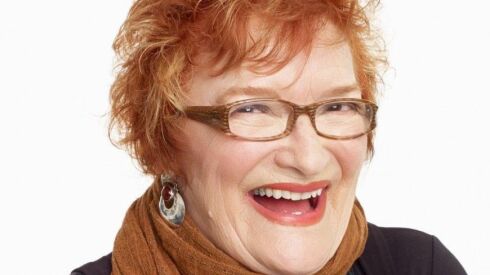The library in my home office is arranged according to subject, with books about birds here, presidents there. There are 28 books by and about Dante, which might seem like a lot, until you realize there are ... counting ... 41 by and about James Thurber.
Some could go several places. “Chicago Whispers: A History of LGBT Chicago Before Stonewall,” by St Sukie de la Croix could be on the shelves of books about Chicago. But I’ve segregated it among books on gay history, alongside George Chauncey’s excellent “Gay New York.”
A publicist pitched de la Croix, ballyhooing his new encyclopedia of Chicago gay bars, and I couldn’t resist the chance to talk with a man the Sun-Times once dubbed “the gay Studs Terkel.”
I know my readership well enough to understand that if I introduce a man named St Sukie de la Croix, many will spend the entire column wondering, “What’s with the name?” and miss anything else he might say. So let’s get that out of the way. Besides, I was curious myself.
“It’s now my legal name,” he began, in a British accent. “I occasionally wrote things for mainstream papers, so when I started writing for gay papers in England, I wanted to separate the writing, straight and gay. I picked a silly name. Then I seemed to be getting more work under the silly name, and when I came to this country, everyone called me ‘Sukie.’”
I assumed that part of his name was sort of an obscene wink.
“No, no, no, not at all,” he said. “Once, I was married with children, I went to a fortune teller on a pier in a seaside resort. She said, ‘You’re married and you have two children and you’re bent. One day you will become a writer, first meeting a man and will leave your wife.’ Her name was Madame Sukie.”

St Sukie de la Croix
Now that’s a good story to explain your name. My name’s “Neil” because there was a Neal Storage Company in Cleveland that had a giant sign painted on a building, and my mother changed the “a” to an “i” to avoid confusion.
To get ready to talk with de la Croix, I flipped through “Chicago Whispers,” which starts with the open role intersex Native Americans played in tribes here. Which adds a layer of delicious irony to those challenging drag story hours and such. Trans folk were here and being written about in 1673. Where were your forebears?
“The big fuss people make about drag queens reading books to children,” de la Croix said. “It’s not the drag queens they’re frightened of; it’s the books, reflecting different versions of life. The problem is that most of them just read the one book, the Bible. There’s a lot more books to read.”

His new book, “Last Call Chicago: A History of 1001 LGBTQ-Friendly Taverns, Haunts & Hangouts,” written with Rick Karlin, is just published. Profusely illustrated with 600 photos, period advertisements and clippings — often from otherwise forgotten bars being closed down by the police — the book is an invaluable historical reference and a trip down memory lane for anyone who went to clubs in Chicago.
I had no idea Club 950 Lucky Number on Wrightwood was a gay bar, but then, I only remember visiting it once, one summer evening in 1983, when I entered with a stranger on a not-very-promising third date and, thanks to Bauhaus’ dripping, clicking, sensual song, “Bela Lugosi’s Dead,” left with the woman I was going to marry.
One of the many mistakes you make about subgroups is to assume members are fonts of information about that group — I realize that anew whenever a Christian friend asks me to explain some detail of Jewish practice that I’m completely out to sea about. But I still asked de la Croix for insight into changes in the gay community over the last half-century.
“You get older ... ” he said. “I’m 71, and things happening in the community, I’m lost trying to understand all these things. I live in Palm Springs, with thousands of old gay men and old lesbians.”
Why leave Chicago?
“I love Chicago,” he said. “It’s a great place when you’re young. When you get older, not so much. The cold weather.”
Chicago didn’t develop its large gay community by accident.
“Illinois became the first state to decriminalize homosexuality in 1961,” he said. “All over the Midwest, obvious gay men, feminine gay men, all moved to Chicago because they thought they were going to be safe here. Throughout the ’60s, there were drag bars everywhere, all over Chicago. There’s an incredible history of cross-dressing.”
Outsiders always bring a keener eye than native-born residents, and de la Croix is no exception.
“Something I’ve discovered about America, and I’ve been here a long time ...” he said. “In America, they think if you cover something up, it completely disappears. Not everybody, of course, but like down in Florida. They think, if you don’t say ‘gay,’ it disappears. It’s almost Neanderthal, to think if you don’t see it, it doesn’t exist. I liken it to putting on a corset. It makes your waist look smaller, but it all flops out the top. It all comes out somewhere. You can’t hide these things.”
Sadly, I can only share a fraction of the conversation. But if you want to talk to de la Croix yourself, he’s doing a reading and signing Oct. 10 at 6 p.m. at Center on Halsted, 3656 N. Halsted St., and another Oct. 12 at Sidetrack, 3349 N. Halsted St.





